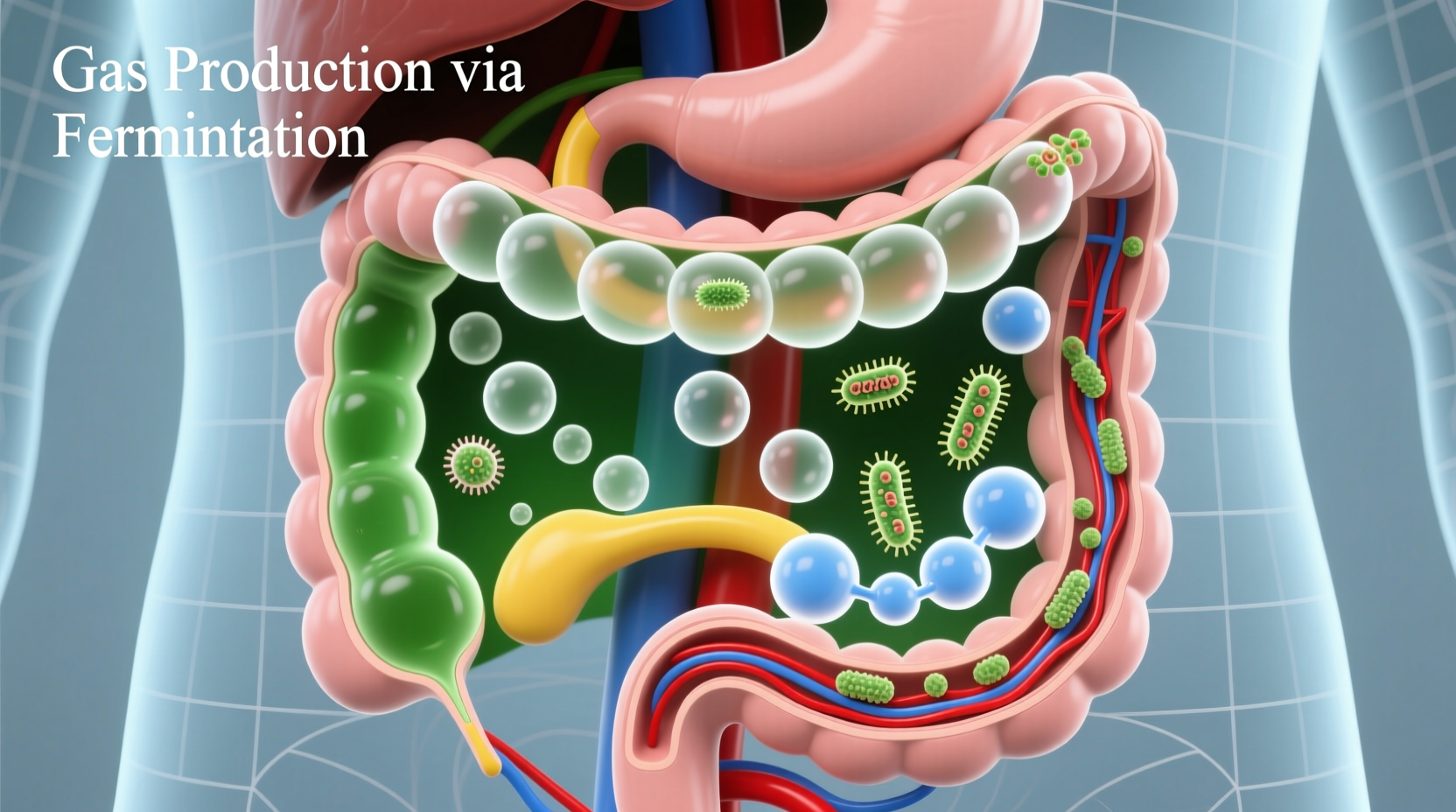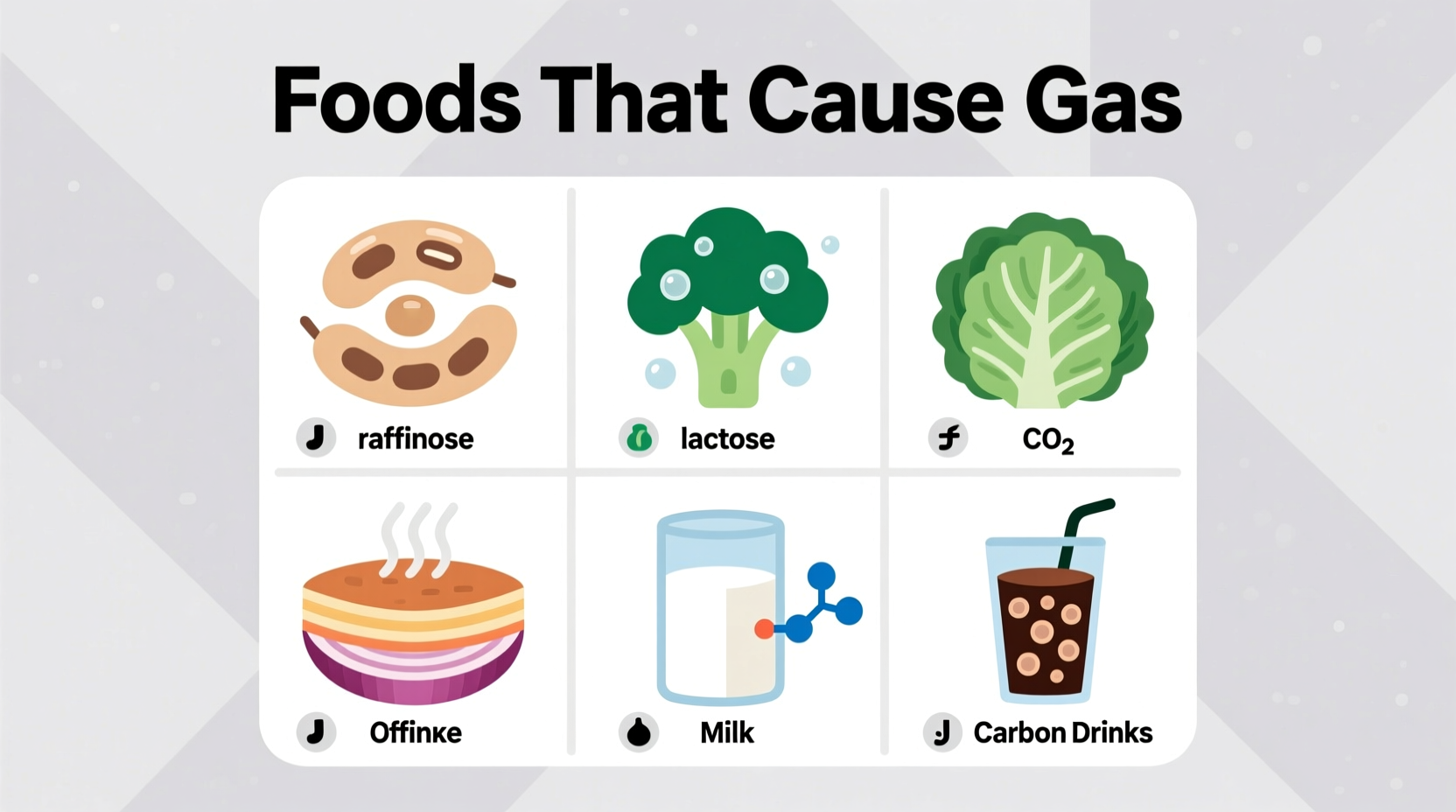Why Certain Foods Cause Gas: The Digestive Science
Gas formation in your digestive system isn't random—it's the result of specific biochemical processes. When certain carbohydrates reach your large intestine undigested, your gut bacteria ferment them through a process called bacterial fermentation, producing hydrogen, methane, and carbon dioxide as byproducts. This natural process becomes problematic when excessive gas causes discomfort, bloating, or flatulence.
According to research from the National Institute of Diabetes and Digestive and Kidney Diseases (NIDDK), approximately 15-20% of the gas in your digestive tract comes from swallowed air, while the remaining 80% results from bacterial fermentation of specific food components.
Your Complete Guide to Gas-Producing Foods
Understanding which foods cause gas requires recognizing the specific compounds responsible. The primary culprits fall into these categories:
1. High-Fiber Foods That Trigger Gas
Fiber is essential for health but certain types cause more gas than others. Soluble fiber, found in many fruits and vegetables, dissolves in water and is more likely to ferment in your colon.
| Food Category | Common Gas-Producing Examples | Primary Gas-Causing Compound | Typical Gas Production Level |
|---|---|---|---|
| Legumes | Beans, lentils, chickpeas | Raffinose (oligosaccharide) | High (3-5 hours after consumption) |
| Cruciferous Vegetables | Broccoli, cauliflower, cabbage | Raffinose & fiber | Moderate-High (2-4 hours) |
| Alliums | Onions, garlic, leeks | FODMAPs (fructans) | Moderate (1-3 hours) |
| Dairy | Milk, ice cream, soft cheeses | Lactose | Varies by lactose tolerance (30-120 mins) |
| Fruits | Apples, pears, peaches | Sorbitol & fructose | Moderate (1-2 hours) |
2. FODMAPs: The Hidden Gas Triggers
FODMAPs (Fermentable Oligosaccharides, Disaccharides, Monosaccharides, and Polyols) are short-chain carbohydrates that humans lack the enzymes to fully digest. A study published in Gastroenterology & Hepatology found that reducing high-FODMAP foods decreased bloating in 75% of IBS patients.
Common high-FODMAP foods include:
- Oligosaccharides: Beans, lentils, chickpeas, wheat, rye, onions, garlic
- Disaccharides: Milk, yogurt, soft cheeses (lactose)
- Monosaccharides: Honey, apples, pears, mangoes (excess fructose)
- Polyols: Sugar-free gum, cauliflower, mushrooms, stone fruits (sorbitol, mannitol)
3. Individual Tolerance Matters: Context Boundaries
Your personal gas response depends on several factors beyond just the food itself:
- Gut microbiome composition: Different bacterial strains produce varying gas amounts
- Digestive enzyme levels: Lactase deficiency affects 65% of the global population
- Eating speed: Rapid consumption increases swallowed air
- Food combinations: Certain pairings increase fermentation
The Mayo Clinic notes that "what causes gas in one person may not cause it in another," highlighting the importance of personal observation over general guidelines.

Practical Strategies to Reduce Food-Related Gas
Instead of eliminating nutritious foods entirely, implement these evidence-based approaches:
Gradual Fiber Introduction Method
Research from the Harvard T.H. Chan School of Public Health shows that slowly increasing fiber intake over 2-3 weeks allows your gut bacteria to adapt, reducing gas production by up to 50%.
Smart Preparation Techniques
- Soak beans overnight: Reduces oligosaccharides by 20-30%
- Cook cruciferous vegetables: Breaks down some gas-producing compounds
- Use lactase enzyme drops: For dairy products (adds enzyme to break down lactose)
- Try digestive enzyme supplements: Alpha-galactosidase before bean consumption
Timing Matters for Gas Reduction
Consuming gas-producing foods earlier in the day gives your digestive system more time to process them before bedtime. A Sleep Foundation report indicates that lying down with undigested gas-producing foods can increase discomfort by 40% compared to remaining upright.
When Gas Signals Something Serious
While occasional gas is normal, consult a healthcare provider if you experience:
- Persistent severe bloating lasting more than 2 weeks
- Gas accompanied by unexplained weight loss
- Significant changes in bowel habits
- Nighttime symptoms disrupting sleep regularly
These could indicate conditions like irritable bowel syndrome (IBS), small intestinal bacterial overgrowth (SIBO), or food intolerances requiring medical evaluation.
Building Your Personal Gas-Trigger Database
Create a simple food and symptom journal tracking:
- Foods consumed (including portions)
- Timing of consumption
- Gas symptoms (timing, severity, duration)
- Other factors (stress level, sleep quality)
After 2-3 weeks, patterns will emerge showing your personal triggers. This personalized approach works better than generic elimination diets, as demonstrated in a Nutrients journal study showing 68% greater symptom improvement with personalized diets versus standard low-FODMAP protocols.











 浙公网安备
33010002000092号
浙公网安备
33010002000092号 浙B2-20120091-4
浙B2-20120091-4